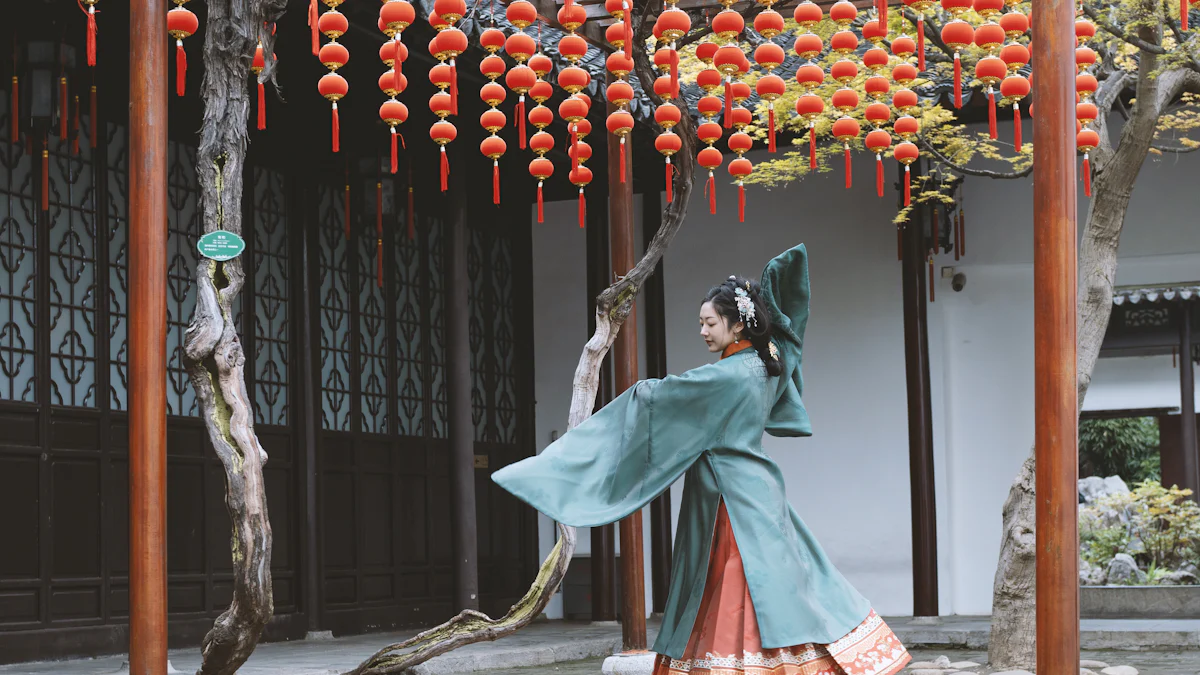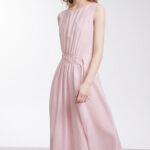 The traditional Chinese hanfu holds a significant place in history, tracing its origins back to the illustrious Han Dynasty. Over three millennia of evolution have shaped this cultural attire, embodying the essence of the Han people. The intricate designs and flowing robes were once an integral part of daily life, reflecting various occasions like festivals and ceremonies. Understanding the traditional Chinese hanfu is crucial for appreciating China’s rich cultural heritage and identity.
The traditional Chinese hanfu holds a significant place in history, tracing its origins back to the illustrious Han Dynasty. Over three millennia of evolution have shaped this cultural attire, embodying the essence of the Han people. The intricate designs and flowing robes were once an integral part of daily life, reflecting various occasions like festivals and ceremonies. Understanding the traditional Chinese hanfu is crucial for appreciating China’s rich cultural heritage and identity.
Misconception 1: Hanfu is a Single Style
Diverse Styles of Hanfu
The traditional Chinese hanfu is not limited to a single style but encompasses a variety of elegant garments that have evolved over centuries. From the majestic Paofu Robe to the sophisticated Ru Jacket and the graceful Qun Skirt, each piece reflects a unique aspect of Chinese culture and history. These styles showcase the intricate craftsmanship and attention to detail that define traditional Han clothing.
Historical Evolution
Throughout history, the traditional Chinese hanfu has undergone significant transformations, influenced by different dynasties such as the illustrious Han Dynasty, the opulent Tang Dynasty, and the refined Ming Dynasty. Each era brought forth new designs, fabrics, and embellishments, shaping the aesthetics of Hanfu and reflecting the cultural values of its time.
By exploring these diverse styles and historical developments, one can truly appreciate the richness and complexity of traditional Chinese attire, debunking the misconception that Hanfu is a monolithic fashion statement.
Misconception 2: Hanfu is the Same as Other East Asian Traditional Clothing
Hanfu vs. Kimono
Differences in Design
- Hanfu styles like quju and zhiju look more similar to standard kimono, while the cross-collar waist-high ruqun resembles the hakama. The chest-high ruqun and aoqun bear a closer resemblance to hanbok.
- Silhouette differences are evident: the kimono boasts a tubular/rectangular shape, contrasting with the curvier silhouette of hanfu and the bell-shaped form of hanbok.
- Noteworthy distinctions in cross-collar shapes include a triangular design for hanfu, rectangular for kimono, and a half oval-ish shape for hanbok. Visual clues extend to sash tying positions, obi widths, sleeve shapes, and lengths.
Cultural Significance
“Understanding the nuances of traditional attire unveils a tapestry of cultural heritage.”
Hanfu vs. Hanbok
Differences in Design
- The intricate details of each garment reveal unique characteristics: from the elaborate embroidery on hanfu to the vibrant colors of hanbok, each piece tells a story of tradition and artistry.
- While both styles feature distinct sleeve designs, with wide sleeves in some variations, it’s the subtle differences in collar shapes that set them apart—triangular for hanfu, semi-oval for hanbok, and rectangular for other East Asian garments.
Cultural Significance
“The clothing we wear is more than fabric; it’s a reflection of our roots.”
Misconception 3: Hanfu is Outdated and Irrelevant
Modern Revival
Role of Celebrities
The resurgence of traditional Chinese hanfu in modern times has been significantly influenced by the endorsement of public figures. Embracing the elegance and cultural significance of Han clothing, celebrities have showcased these exquisite garments on various occasions, from red carpet events to music videos. Their influence has sparked a renewed interest in traditional Chinese hanfu, captivating a global audience and bridging the gap between past traditions and contemporary fashion trends.
Cultural Events
Cultural events dedicated to celebrating the beauty and heritage of traditional Chinese hanfu play a pivotal role in its revival. Festivals, exhibitions, and fashion shows centered around Han clothing provide a platform for enthusiasts to showcase their creativity and passion for this ancient attire. These events not only educate attendees about the historical significance of Hanfu but also foster a sense of community among individuals who share a common love for traditional Chinese culture.
Cultural Significance Today
Connection to Heritage
Wearing traditional Chinese hanfu serves as a profound connection to one’s heritage, allowing individuals to honor their ancestors and preserve centuries-old traditions. By donning Han clothing, people pay homage to the rich history and cultural identity of the Han Chinese, reinforcing a sense of pride in their roots. This deep-rooted connection transcends mere fashion choices, embodying a timeless link to the past that resonates with present-day values.
Promotion of Cultural Preservation
The revival of traditional Chinese hanfu is not merely a fashion statement but a movement towards cultural preservation. Enthusiasts advocate for the recognition and appreciation of Han clothing as an art form that encapsulates China’s artistic legacy. Through promoting the wearing and creation of authentic Hanfu pieces, individuals contribute to safeguarding this invaluable aspect of Chinese heritage for future generations, ensuring that its beauty and significance endure through time.
Cultural preservation stands as a cornerstone of societal heritage, fostering unity and individuality. Embracing the essence of traditional Chinese hanfu is a testament to honoring centuries-old traditions and celebrating cultural diversity. Learning more about Han clothing not only enriches one’s understanding of Chinese history but also promotes intercultural appreciation. The significance of preserving Hanfu culture transcends mere fashion; it symbolizes a deep-rooted connection to ancestral roots and a shared human legacy. In today’s global landscape, the preservation of traditional attire serves as a beacon of cultural richness and historical continuity.






